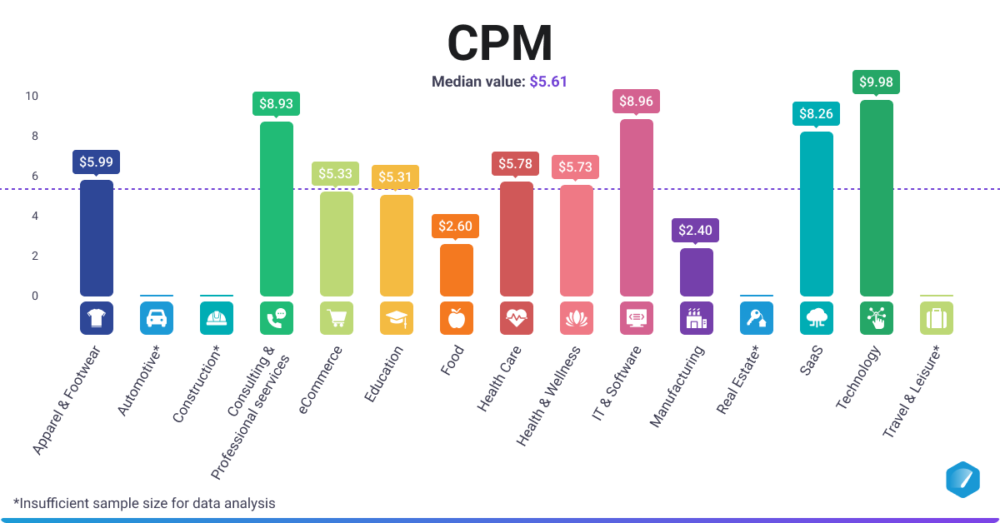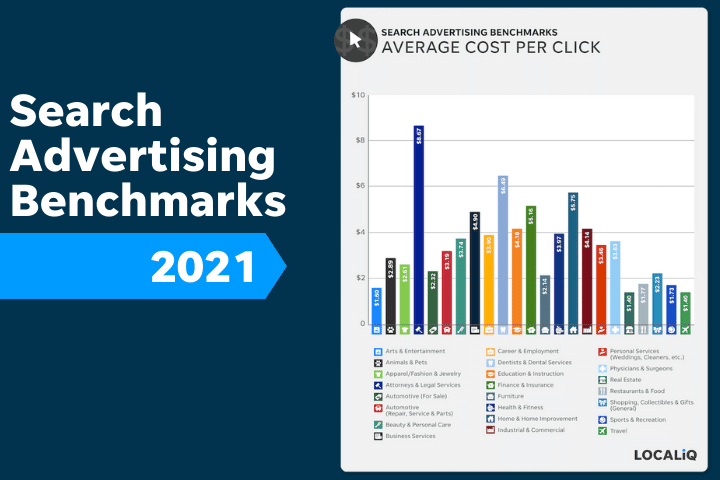Discover the secrets behind advertising CPM benchmarks in our groundbreaking study. Uncover the numbers that will revolutionize your marketing strategy.

Image courtesy of via DALL-E 3
Table of Contents
Introduction to Advertising CPM
Advertising is everywhere, from billboards on the roadside to ads popping up on your favorite websites. Have you ever wondered how much it costs for companies to show you these ads? That’s where CPM comes in. CPM stands for Cost Per Mille, which means the cost for 1,000 ad impressions. Let’s dive into this exciting world of advertising benchmarks and learn why they are essential.
What is CPM?
Imagine you love playing video games, and a game company wants to show you an ad for their latest release. The company pays a certain amount for every 1,000 times they show the ad to gamers like you. That amount is what we call CPM. So, every time you see that game ad, the company is paying a small fee to reach you and thousands of other players.
Why Study CPM Benchmarks?
Now, you might be wondering why it’s important to study these benchmarks. Well, think of it like this – if you were buying a toy, you’d want to know if you’re paying a fair price, right? Similarly, advertisers study CPM benchmarks to understand if they are spending too much or too little to reach their target audience. It helps them make smart decisions about where to invest their advertising dollars.
Understanding Ad Impressions
An ad impression is each time an advertisement is displayed to a user. Think of it like this – when you visit a website, use an app, or watch a video online, every time an ad pops up on your screen, that’s one ad impression.
Counting Impressions
Counting impressions is like keeping track of how many times an ad appears in front of people. Advertisers need to count impressions accurately to know how many times their ad is being seen by viewers. This helps them understand if their advertising efforts are effective or not.
How CPM is Calculated
Calculating CPM (Cost Per Mille) is a crucial aspect of advertising that helps businesses understand the efficiency of their ad campaigns. By knowing how to calculate CPM, advertisers can make informed decisions on how to allocate their budgets for maximum impact. Let’s break down the process of CPM calculation step by step.

Image courtesy of via Google Images
The CPM Formula
The formula for calculating CPM is simple: CPM = (Total Ad Spend / Total Impressions) x 1,000. This formula helps determine how much it costs to reach 1,000 potential customers through ad impressions. Let’s illustrate this with an example.
Example Calculation
Imagine you spent $10 on an ad campaign that generated 2,000 impressions. To calculate the CPM, simply divide the total ad spend by the total number of impressions and then multiply by 1,000. In this case, $10 / 2,000 impressions x 1,000 = $5 CPM. This means it costs $5 to reach 1,000 potential customers with your ads.
Why CPM Benchmarks Matter
When it comes to advertising, understanding CPM benchmarks can make a big difference in the success of your campaigns. But why exactly do these benchmarks matter so much? Let’s explore why keeping an eye on your CPM numbers is crucial for advertisers.
Comparing Your CPM
One of the main reasons CPM benchmarks are important is that they allow you to compare your advertising costs with industry standards. By knowing what other advertisers are paying for ad impressions, you can assess whether you are getting a good deal or if you’re overspending.
Making Budget Decisions
By analyzing CPM benchmarks, you can make informed decisions about how much to allocate for your advertising budget. If your CPM is higher than the industry average, you may need to adjust your spending to ensure you are maximizing your ROI.
Industry Differences in CPM
When it comes to advertising, different industries have varying benchmarks for their CPM (Cost Per Mille). This means that some industries have higher CPMs than others, and understanding these differences is crucial for advertisers to make informed decisions about their marketing strategies.

Image courtesy of via Google Images
High vs. Low CPM Industries
Some industries, like technology and finance, typically have higher CPMs compared to others such as retail or food. This is because the audience for technology or finance-related products or services is often more targeted and valuable to advertisers, leading to increased competition and higher costs per impression.
Factors Affecting CPM
Several factors can influence CPM rates in different industries. One key factor is the target audience – niche audiences that are harder to reach may result in higher CPMs. Additionally, the placement of ads, such as premium positions on websites or during peak times, can also impact CPM rates. Seasonality can also play a role, with certain times of the year being more competitive for advertisers, thus affecting CPM values.
Trends in CPM Benchmarks
Recent years have seen significant shifts in advertising trends impacting CPM benchmarks. The rise of digital advertising has revolutionized the industry, with online platforms offering targeted advertising options that can be more cost-effective than traditional media. This shift has led to changes in CPM values as advertisers adapt to the digital landscape.
Predicting Future CPMs
As the advertising ecosystem continues to evolve, predicting future CPM trends becomes essential for marketers. Based on current patterns, experts suggest that CPMs may fluctuate in response to emerging technologies and consumer behaviors. For instance, as mobile usage grows, CPMs for mobile ads may rise, while other platforms experience price adjustments based on user engagement.
Using CPM Benchmarks for Strategy
When it comes to advertising, understanding and utilizing CPM benchmarks can be a powerful tool for developing an effective strategy. By analyzing these benchmarks, advertisers can make informed decisions that maximize the impact of their campaigns. Here’s how you can use CPM benchmarks to shape your advertising strategy:

Image courtesy of via Google Images
Setting Goals
Setting realistic advertising goals is essential for any successful campaign. By using CPM benchmarks, you can establish clear objectives based on industry standards and trends. For example, if the average CPM for your industry is $10 and you aim to have a lower CPM, you can set a goal to achieve a $8 CPM for your campaign. This way, you have a measurable target to work towards.
Adjusting Campaigns
Monitoring your campaign’s performance in relation to CPM benchmarks is crucial for making real-time adjustments. If your campaign is not meeting the set benchmarks, you may need to reassess your targeting, creative elements, or ad placement. By staying adaptable and responsive to the data provided by CPM benchmarks, you can optimize your campaigns for better results.
Tools for Tracking CPM Benchmarks
When it comes to monitoring and analyzing your CPM benchmarks, utilizing the right tools is essential. These platforms can provide valuable insights into the performance of your advertising campaigns and help you make informed decisions for future strategies.
Popular Tracking Tools
There are several widely used tools available to advertisers that can assist in tracking CPM benchmarks. Google Analytics is a powerful tool that offers detailed data on website traffic, visitor behavior, and ad performance. By integrating your ad campaigns with Google Analytics, you can easily track your CPM and other key metrics.
Another common platform is Facebook Ads Manager, which provides comprehensive analytics for Facebook and Instagram advertising campaigns. With features like audience insights, ad performance tracking, and budget optimization, Facebook Ads Manager is a valuable tool for monitoring CPM benchmarks.
Understanding the Data
Once you have access to the data from these tracking tools, it’s important to know how to interpret and utilize it effectively. Look for trends in your CPM values over time to identify patterns and determine the effectiveness of your campaigns.
By analyzing the data provided by these tools, you can make informed decisions on adjusting your ad spend, targeting strategies, and creative elements to optimize your CPM benchmarks. Utilizing these tools effectively can lead to more efficient and successful advertising campaigns.
Conclusion
In conclusion, understanding Advertising CPM Benchmarks is crucial for any advertiser looking to maximize the effectiveness and efficiency of their campaigns. CPM, or Cost Per Mille, is the cost for 1,000 ad impressions, and studying benchmarks allows advertisers to gauge whether they are paying a fair price for their advertising efforts.

Image courtesy of via Google Images
Throughout this article, we’ve delved into what CPM is and why it matters, how ad impressions play a key role in CPM calculations, and the significance of comparing your CPM with industry standards. By knowing how to calculate CPM, interpret benchmarks, and adjust strategies accordingly, advertisers can make informed decisions that drive success.
Furthermore, we explored the differences in CPM across industries, highlighting the factors that influence these variations. Trends in CPM benchmarks were examined to provide insights into the evolving landscape of advertising costs, aiding advertisers in predicting future CPM values and adjusting their strategies accordingly.
By utilizing CPM benchmarks effectively, advertisers can set realistic goals, tweak campaigns for optimal performance, and make data-driven decisions that lead to successful advertising outcomes. Tracking tools like Google Analytics and Facebook Ads Manager can offer valuable insights to refine strategies and improve CPM efficiency.
In wrapping up, it’s clear that CPM benchmarks serve as a guiding light in the complex world of advertising, helping advertisers navigate cost-effective campaigns and achieve their marketing objectives. Embracing these benchmarks and staying attuned to industry trends is crucial for staying ahead in the ever-evolving landscape of advertising.
Want to turn these SEO insights into real results? Seorocket is an all-in-one AI SEO solution that uses the power of AI to analyze your competition and craft high-ranking content.
Seorocket offers a suite of powerful tools, including a Keyword Researcher to find the most profitable keywords, an AI Writer to generate unique and Google-friendly content, and an Automatic Publisher to schedule and publish your content directly to your website. Plus, you’ll get real-time performance tracking so you can see exactly what’s working and make adjustments as needed.
Stop just reading about SEO – take action with Seorocket and skyrocket your search rankings today. Sign up for a free trial and see the difference Seorocket can make for your website!
Frequently Asked Questions (FAQs)
What is a Good CPM?
A ‘good’ CPM can vary depending on the industry you are in. Industries like technology may have higher CPMs due to the competitive nature of the market and the specific audience they target. On the other hand, industries like retail may have lower CPMs because they have broader audiences and less competition. It’s essential to compare your CPM with industry benchmarks to determine if yours is competitive or if there is room for improvement.
How Can I Lower My CPM?
If you’re looking to lower your CPM, you can try a few strategies to improve your ad efficiency. One way is to focus on improving the relevance of your ads to your target audience. By creating engaging and targeted ads that resonate with your audience, you can potentially increase click-through rates and decrease your CPM. Additionally, refining your targeting parameters to reach a more specific audience that is more likely to engage with your ads can also help lower your CPM.







